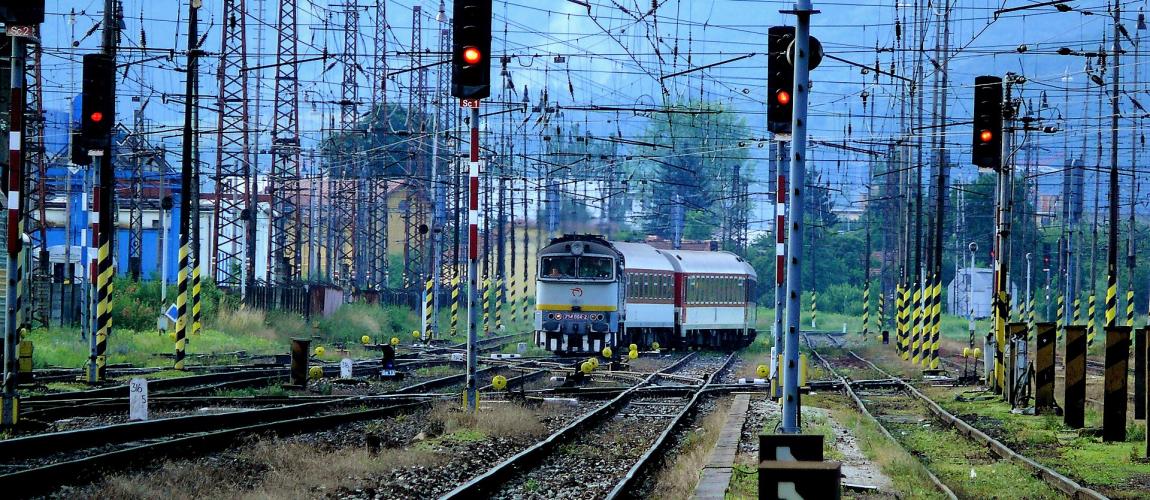Track Access Agreements - European Union

Photo Credit: Image by Oto Zapletal from Pixabay
The open access regime in the European Union (EU) requires infrastructure managers (IMs) to allow railway undertakings to operate passenger or freight services on the railway network in a non-discriminatory manner. Other beneficiaries are specified in the respective EU legislation (for example, shippers, freight forwarders and combined transport operators).
Track access regimes in the EU consist of track access laws and regulations and are administered by an independent railway regulator in each EU country. Infrastructure managers must develop and publish network statements to ensure transparency and non-discriminatory access. The use of railway infrastructure requires a track access agreement between the infrastructure manager and the railway undertaking or other beneficiaries specified in the relevant EU Directives, which is valid for one year. Framework agreements set out the general rights and obligations of the infrastructure manager and the access seeker with regard to the use of railway infrastructure for a longer period of time.
This page looks at the obligatory provisions in the EU for track access agreements and provides links to sample network statements, as well as links to and summaries of model track access and framework agreements from different countries in the European Union
The following provisions need to be incorporated into track access agreements in the EU: Framework agreements may exceed one working timetable period. They determine the characteristics of the infrastructure capacity required. In order to specify train paths in detail the parties need to enter into track access agreements for each working timetable period. For more information see the section on Track Access Laws and Regulations. Directive 2012/34/EU establishing a single European railway area. Network statements set out the nature of the infrastructure available to railway undertakings and contain information regarding the conditions for access. They set out information required by railway undertakings and other beneficiaries to apply for infrastructure capacity. Typically they contain information on the general requirements for the use of infrastructure (for example, licenses, safety certificate and insurance), the deadlines, procedures and criteria for capacity allocation, charging principles and tariffs, restrictions on the use of rail infrastructure, management principles for trains on a day-to-day basis and procedures for dispute resolution and appeal. Network Statements for many EU countries are on the website of RailNetEurope (RNE) in the English language. Example 1: EU - Standard RailNetEurope (RNE) Contract for the Use of the Railway Infrastructure provided by RNE - Model track access agreement between several IMs and RU for access to and use of railway network managed and operated by RNE members. Drafted for a situation where a requested train route crosses at least one national border between RNE members and departure and end stations are located in different countries (international train paths). Example 2: France – Model contracts provided by Réseau Ferré de France (RFF), the infrastructure manager of the French national railway network (English and French). Example 3: Germany - Model Contracts for Track Access provided by DB Netz AG, the infrastructure manager of the main national railway network in Germany (English and German). Model contract between DB Netz AG and RU for the use of the railway network subject to an access charge. The contract sets out basic provisions commonly found in track access agreements in the EU. The performance regime takes day-to-day performance of IM and RU into account. Applicable for freight and passenger transport as well as domestic and international rail transport. Example 4: Slovakia - Contract on the Access to the Railway Infrastructure (Zmluva o prístupe k železničnej infraštruktúre – vzor) provided by Železnice Slovenskej republiky (ZSR), the infrastructure manager for the public railway infrastructure in Slovakia (English and Slovakian). The model contract between ZSR and RU is set out in Annex C of the network statement. ZSR grants track access to RU subject to an access charge. Applicable for freight and passenger transport. Example 5: United Kingdom – Model Track Access Agreements provided by the Office of Rail Regulation (ORR) regarding the main railway infrastructure in the United Kingdom that is managed and operated by Network Rail Infrastructure Limited (Network Rail). Example 1: EU – RailNetEurope (RNE) Standard Framework Agreement provided by RNE - Model contract between several IMs and a rail operator for access to and use of the railway network managed and operated by RNE members. The model agreement is drafted for a situation where a requested train route crosses at least one national border between RNE members and departure and end stations are located in different countries (international train paths). The rail operator intends to secure infrastructure capacity on the railway network for a period in time exceeding one working timetable period. The framework agreement is the basis for separate track access agreements between the parties to be concluded each year. Example 2: United Kingdom – Channel Tunnel Railway Link (High Speed 1) – High Speed 1 Limited (HS 1 Ltd.) is the IM for the high-speed railway line between St. Pancras Station in London and the Channel Tunnel that connects with the international high-speed routes between London and Paris, and London and Brussels.Obligatory Provisions for Track Access Agreements in the EU
EU Network Statements
Sample EU Track Access Agreements
Sample EU Framework Agreements
Updated:
Related Content
Public-Private Partnerships for Transport
Type of ResourcePublic-Private Partnerships in Airports
Type of ResourcePublic Private Partnerships in Ports / Port Reform
Type of ResourcePublic-Private Partnerships in Roads
Railway PPPs
Type of ResourceUrban Passenger Transport
Type of ResourceTransportation PPP Toolkits
Type of ResourceGender & Transport Projects
Additional Resources
Railway Concessions and BOTs
Type of ResourceRailway Laws and Regulations
Type of ResourceRailway Organizations
Type of ResourceRailways - Further Reading and Resources
Type of ResourceTrack Access and Haulage Agreements
Type of Resource